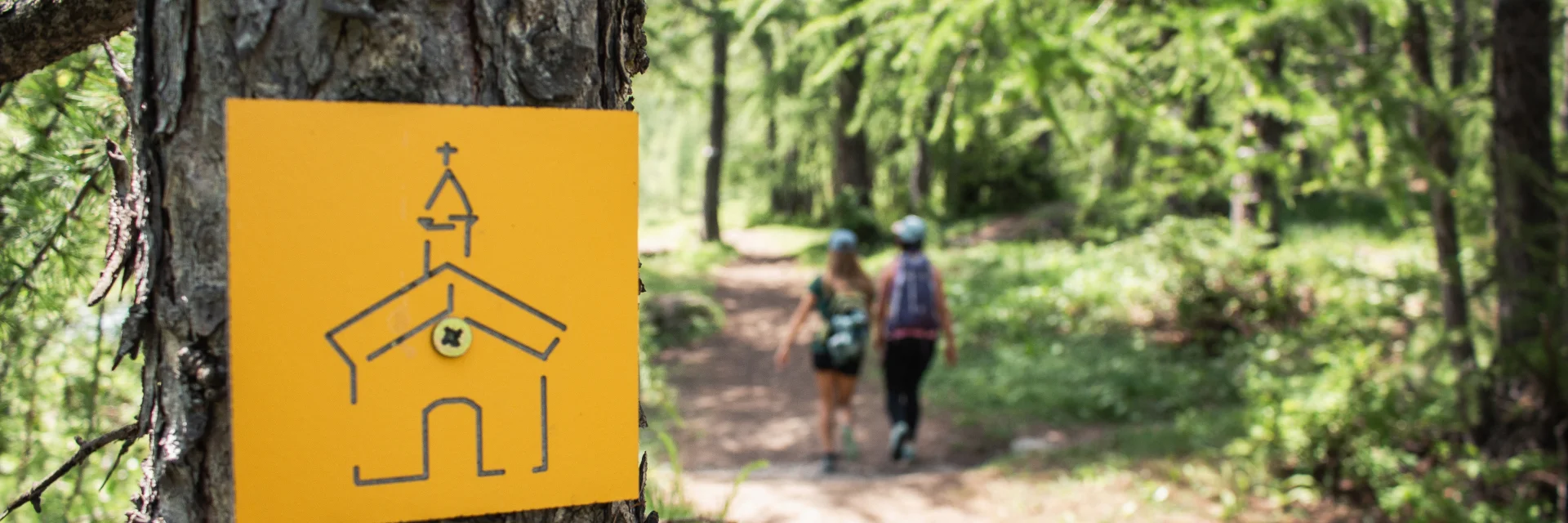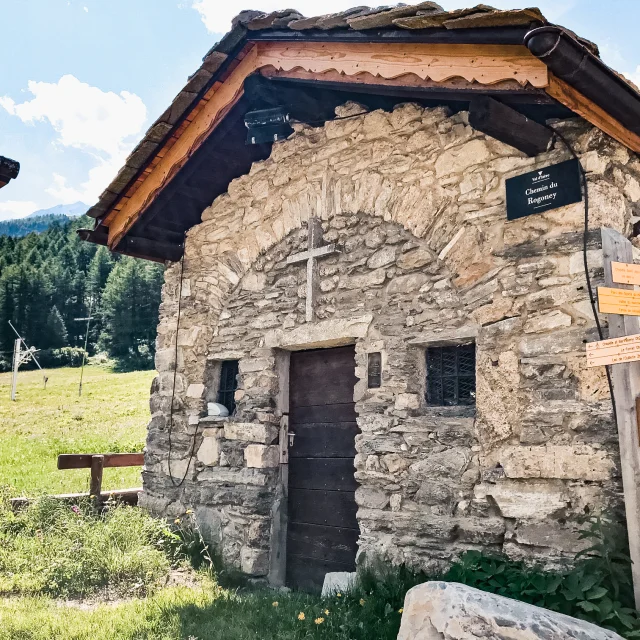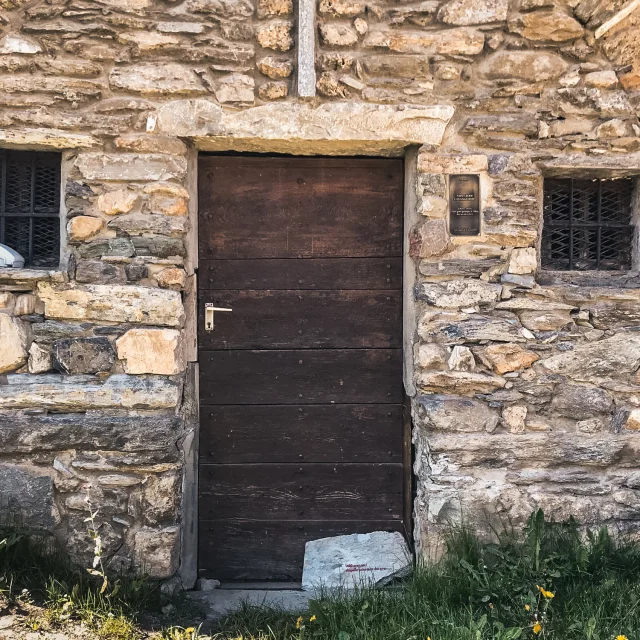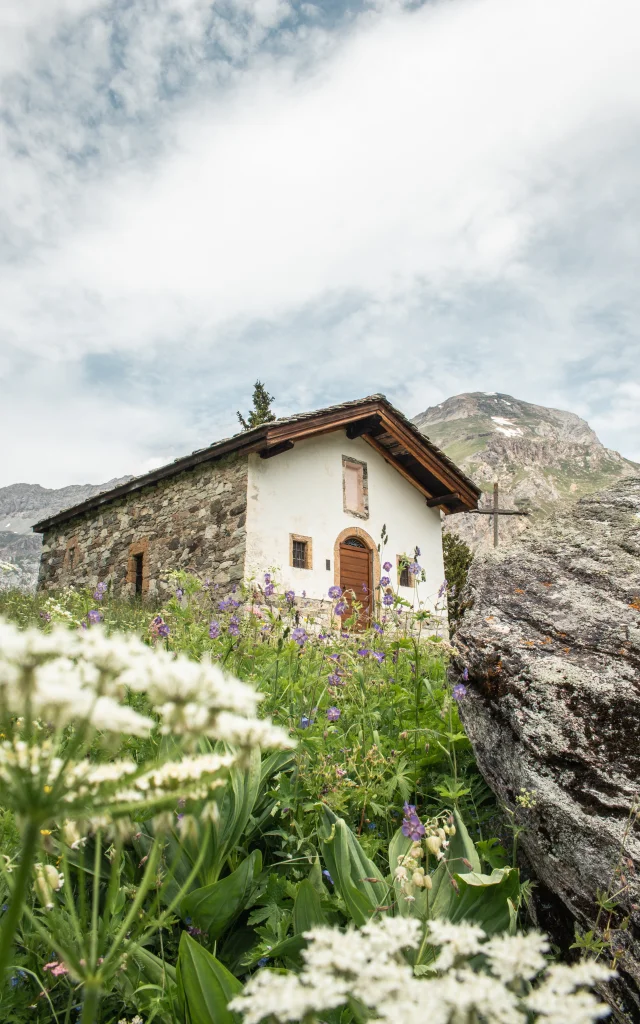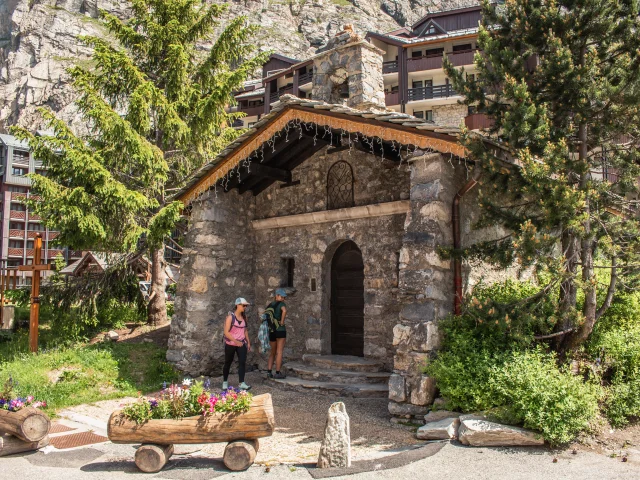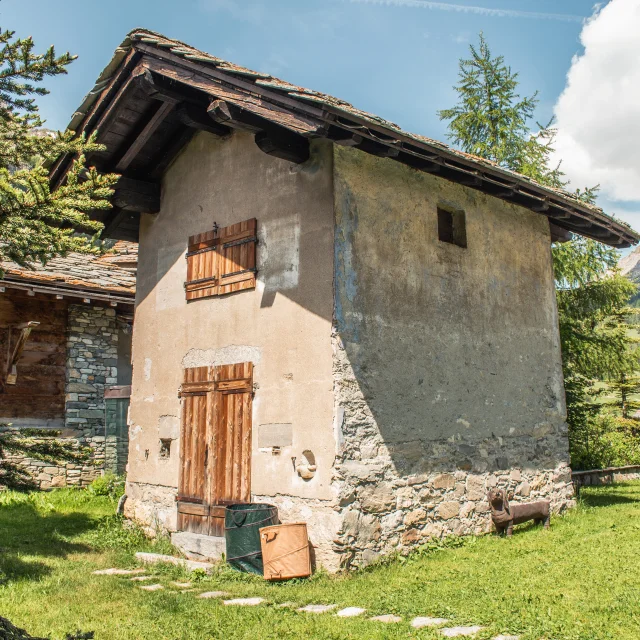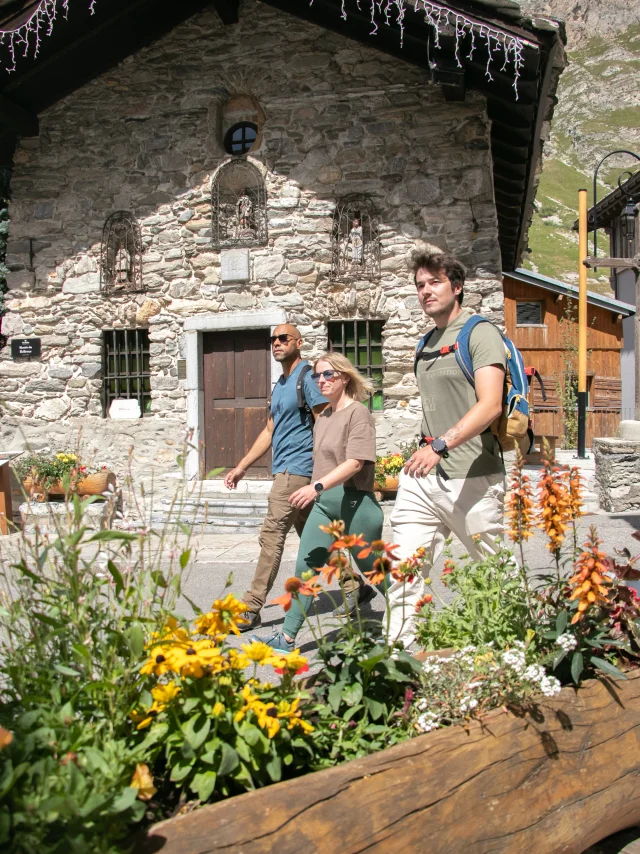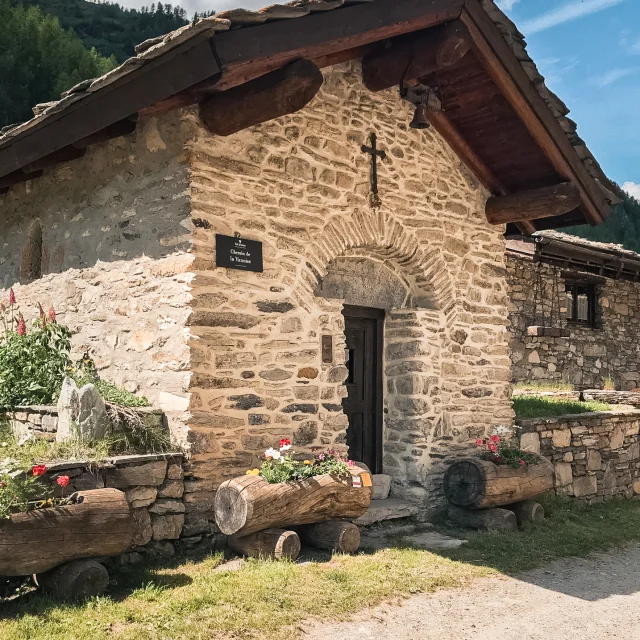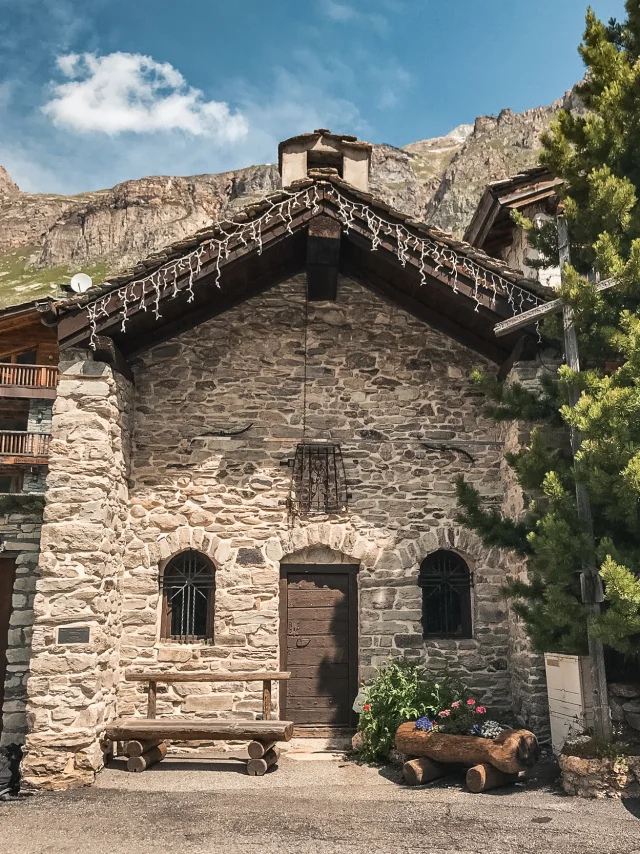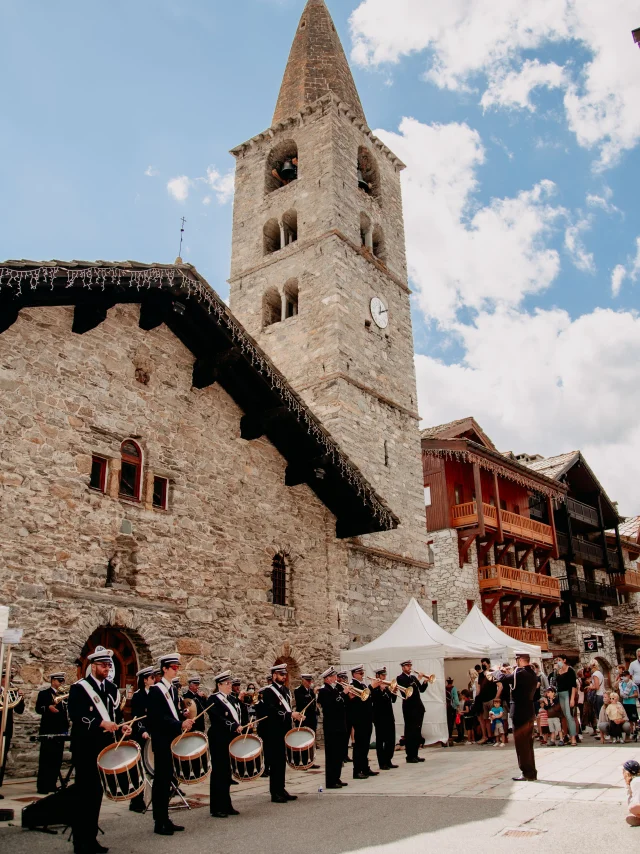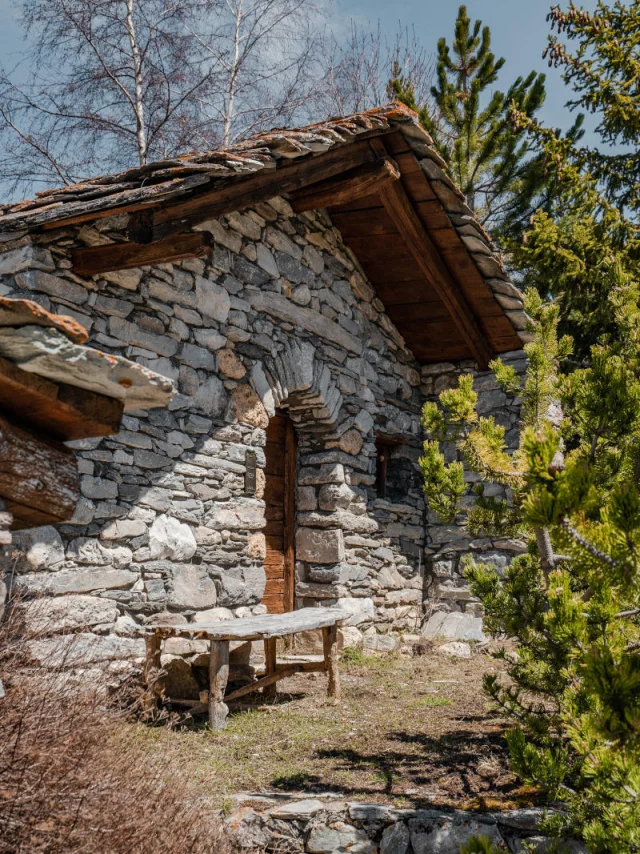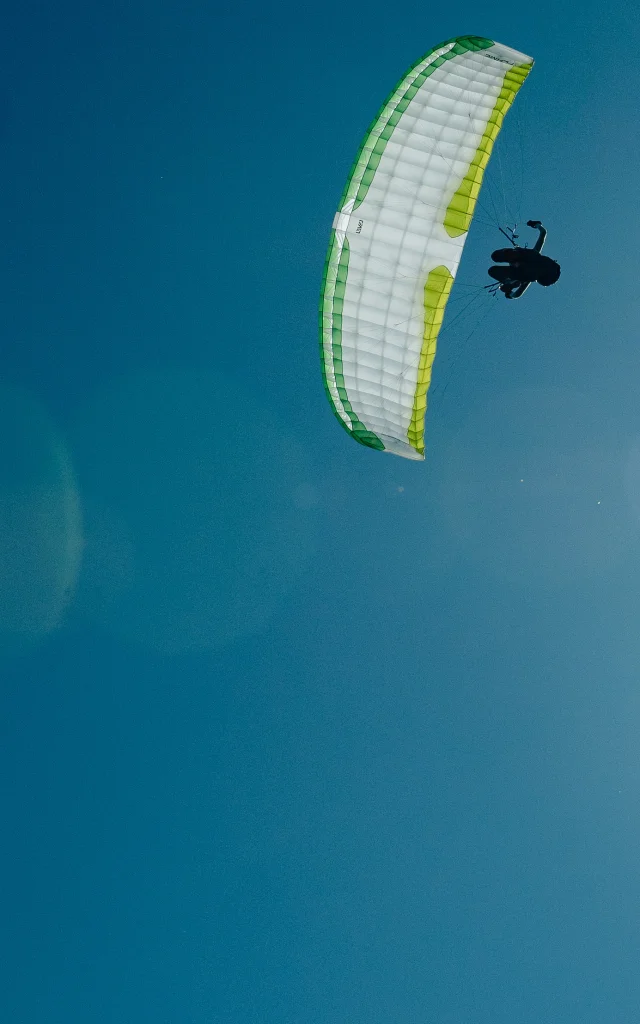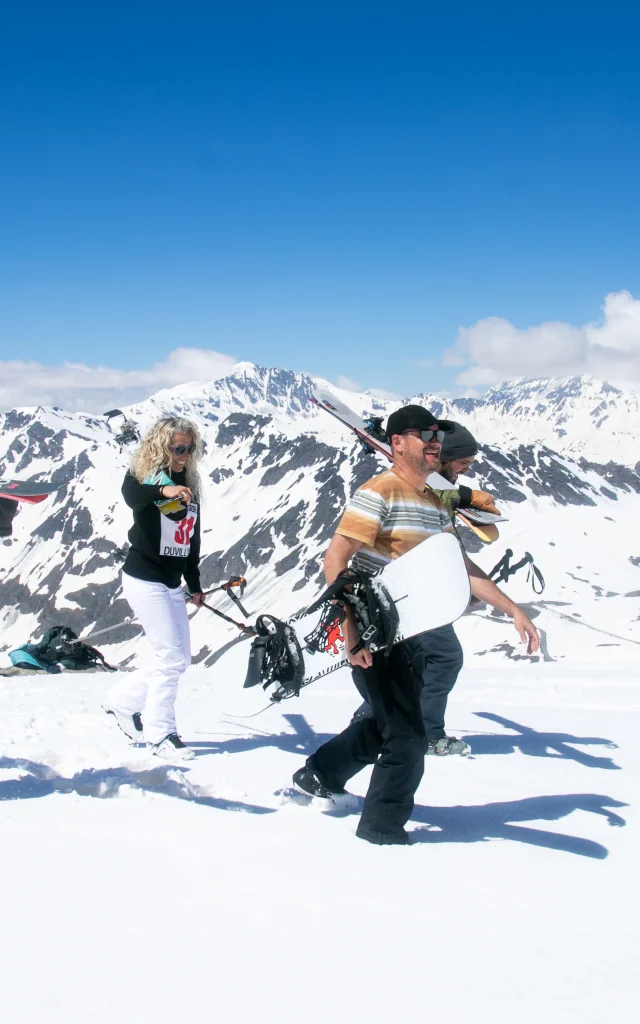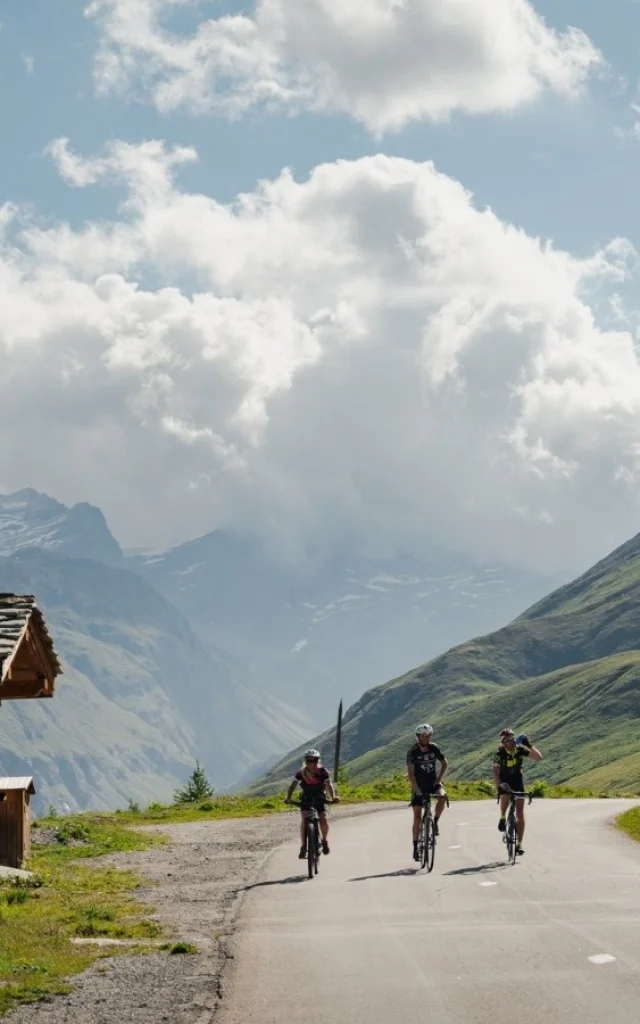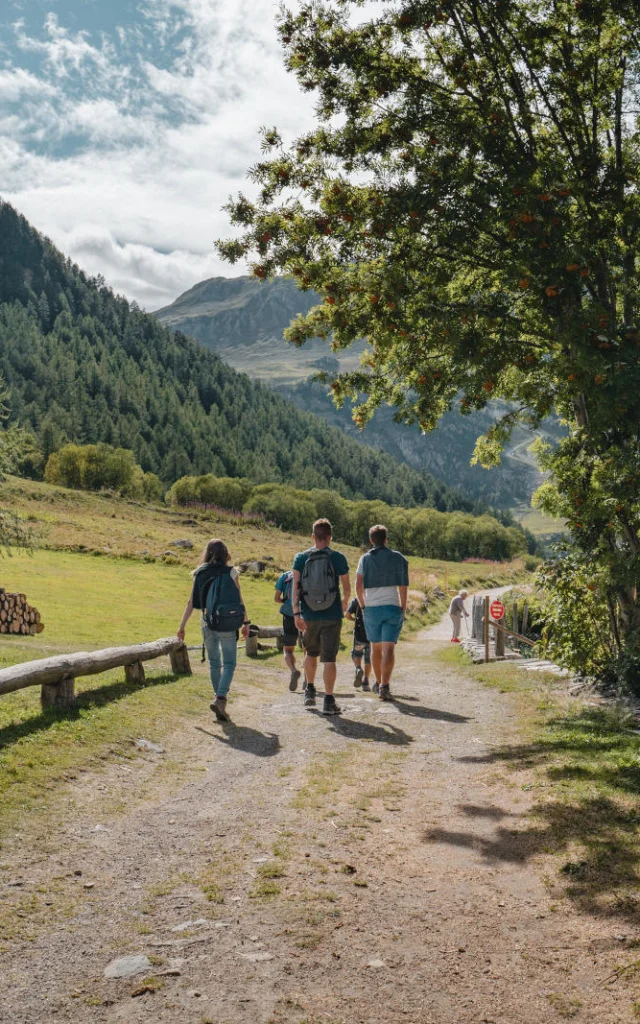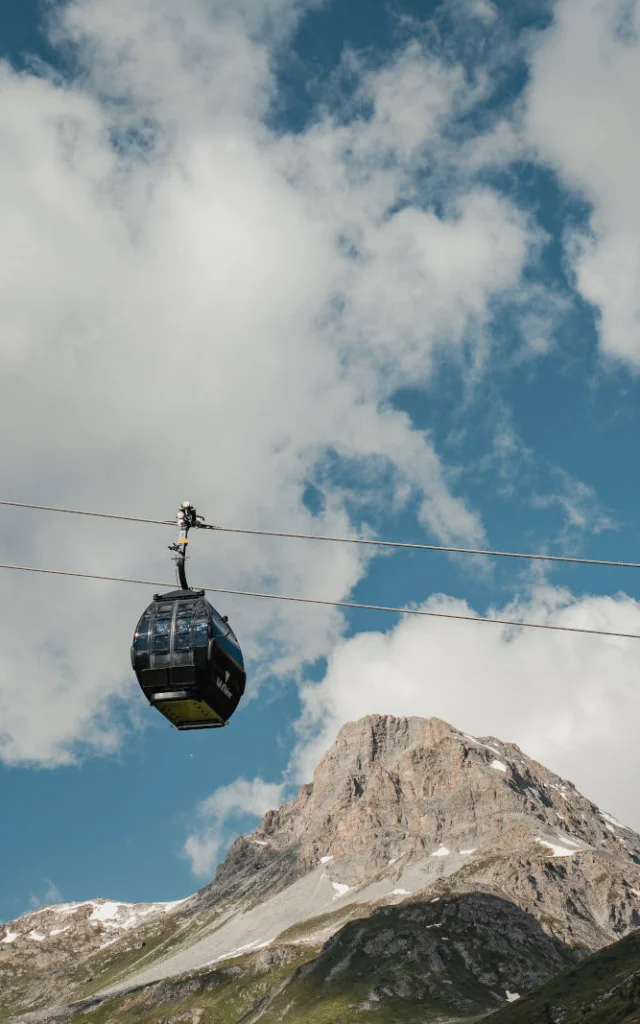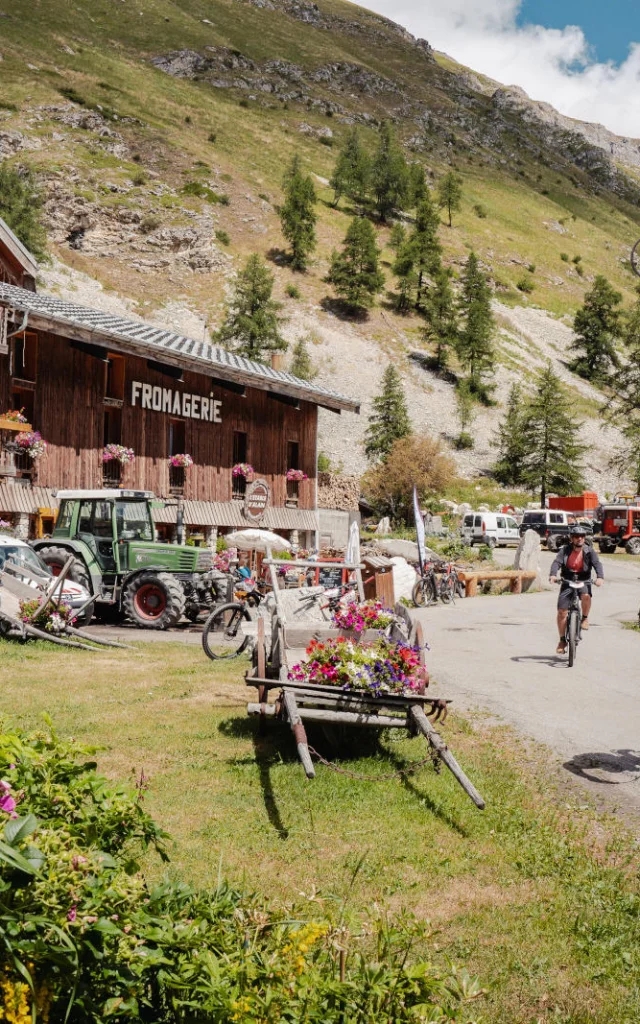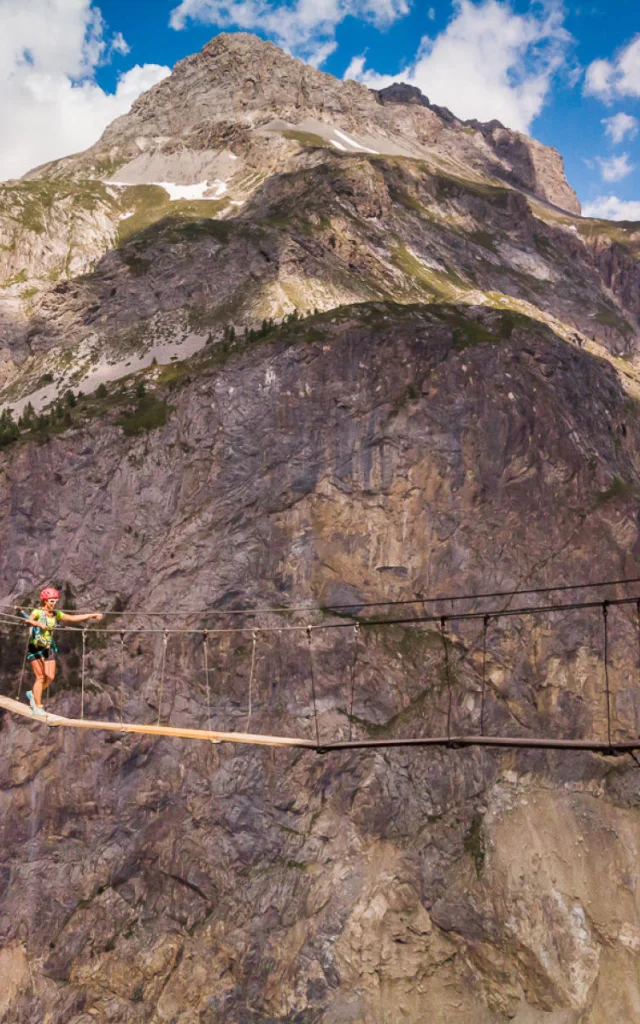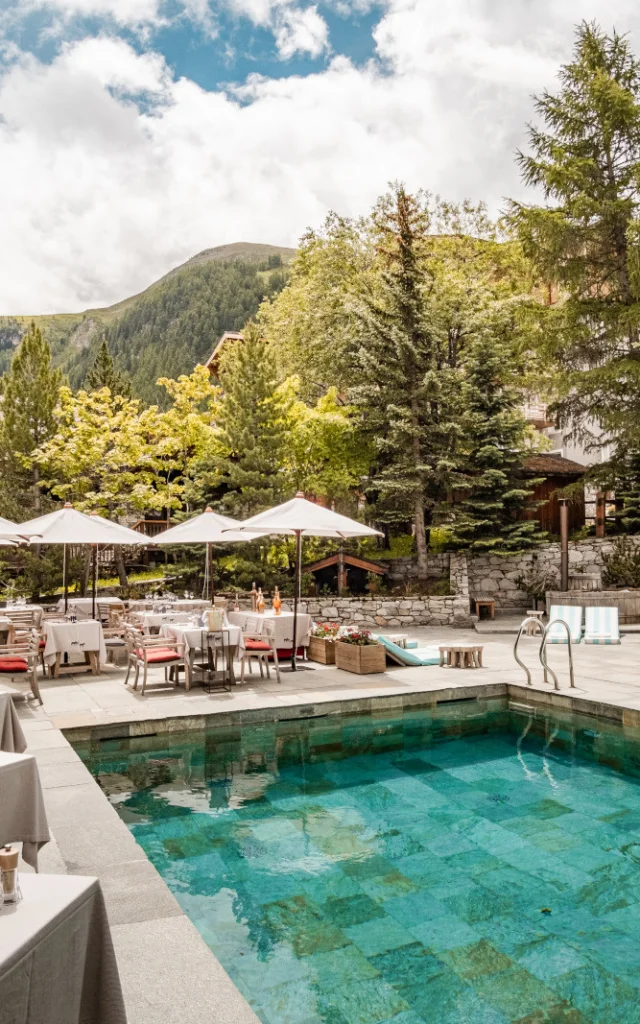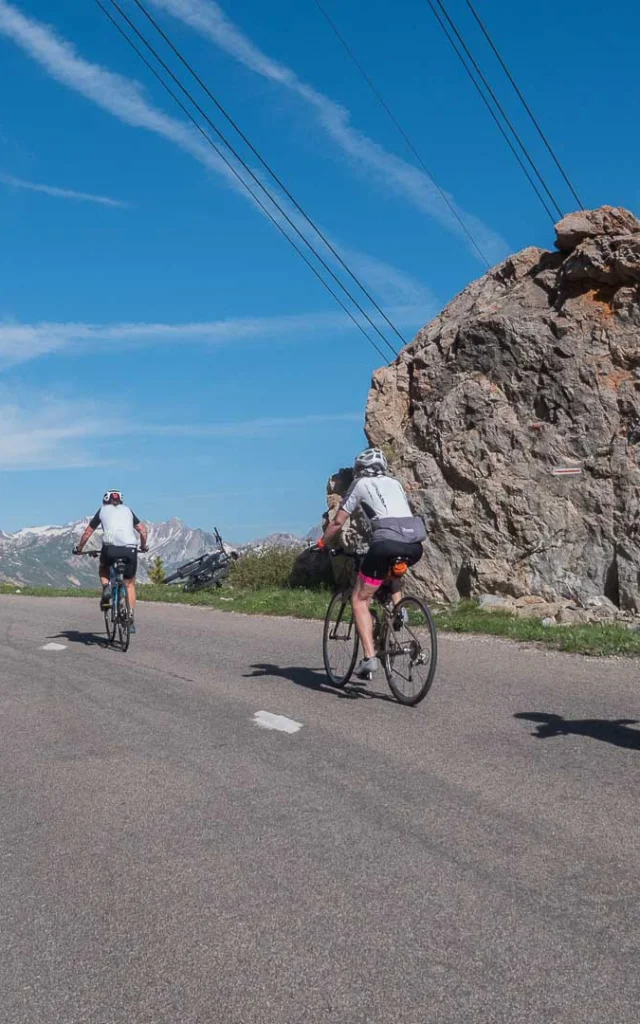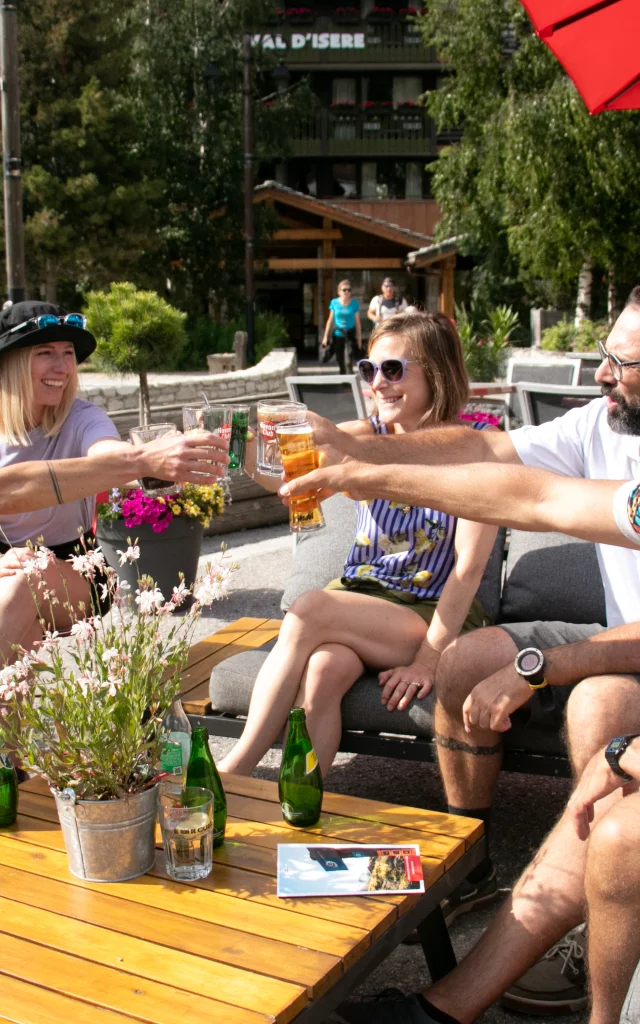7 chapels tourA blend of history and discovery
Known as “La Val de Tignes” until the end of the 19th century, Val d’Isère would once have offered visitors a territory dotted with religious signs: crosses at intersections and on summits, oratories lining the paths, chapels in the various hamlets. With a little vigilance, you’ll still come across one of these signs on door lintels, or sometimes in a vegetable garden. Yet many of them have disappeared. Over time, ten chapels have disappeared from the Avalon landscape.
Explaining the disappearance of these ten chapels is no easy task. While the mountain’s wrath can be evoked by an avalanche, or the sudden flooding of the Isère, which inundates the village, for most of them (often privately owned), the lack of income and therefore maintenance, coupled with the disaffection of these outlying inhabited places, are responsible for their disappearance.
Yesterday, the community, in times of adversity (avalanche, crop failure, storms, epidemics, passing armies, suffering of all kinds) had only one resource: to implore divine intervention. His living space was sacralized and dotted with religious signs, and numerous Holy Intercessors intervened as intermediaries between God and man. With the exception of the Virgin Mary, each of them was assigned a specific mission: Saint Roch and Saint Sébastien to guard against or cure us of the plague; Saint Guérin to protect cattle and herds; Saint André to protect us from landslides and landslides, and so on.
The foundation of most of our chapels, still existing or disappeared, seems to predate the first pastoral tours of the early 17th century (1633), which mention them. These pastoral tours corresponded to the implementation of the Counter-Reformation, which followed on from the Council of Trent (1545-1563). Despite the disappearance of some of these chapels, today’s “Tour du village” trail takes you close to those that remain. Through their discovery, we’ll try to rediscover the tenuous thread that links us to the history of this ancient community, while offering keys to a better understanding of our present-day landscape.
